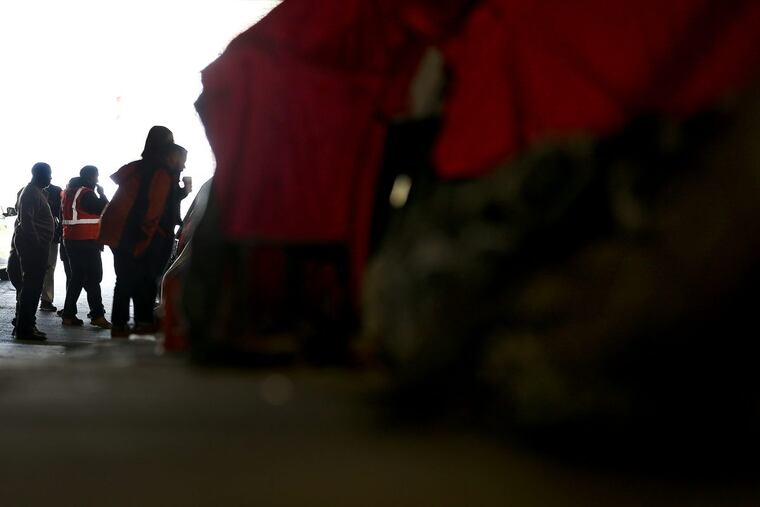The city's heroin encampment plan is a proving ground for how we move forward | Mike Newall
This plan is a proving ground for the city - to do right by the community in Kensington, and to do right by the community in the camps.

When the heroin encampment under the Kensington Avenue bridge first grew in October, Philadelphia's response was to hide the mattresses.
Literally. Every week, workers would clear out the 15 or so beds that people in addiction had dragged into the bridge tunnel and hide them in the hopes that their owners would be unable to find them and move somewhere else.
And has it learned lessons from the previous year of herding people in addiction around like cattle, from one camp to the next?
From early reports of the city's plan, it seems city officials have. As my colleague Aubrey Whelan reported, the city this time has realized it must meet people where they are. Over 30 days, outreach workers will be sent to two of the camps, open shelter beds, and relax some of the barriers that keep people from treatment — including guaranteeing them immediate access. Instead of stealing people's mattresses, the city is providing the shelter beds the neighborhood has needed for so long, and, more important, expanding a low-barrier, housing-first program that doesn't require sobriety, and allows people to take the first steps toward recovery, on their terms.
There's skepticism that the city can get it right. This type of comprehensive plan wasn't there when Gurney Street closed. For so long, there wasn't any plan at all. So it's understandable that neighbors are frustrated. (What's less understandable is City Councilwoman Maria Quiñones-Sanchez's continued insistence on referring to the people in the camps as being "on a binge" and suggesting law-and-order responses to a complex addiction crisis that we know can't be solved that way.)
READ MORE: 'It's gone now': Gurney Street heroin camps mostly cleaned up
So this plan is a proving ground for the city — to do right by the community in Kensington and to do right by the community in the camps.
The community in the tunnels is not fixed — its members changes by the week. By the day. More and more people are showing up in Kensington because that's where we've allowed the drug epidemic to flourish. So many of the faces I first encountered in the neighborhood last summer are gone — they've been pushed somewhere else, or are in recovery, or in jail. Or they've been lost to an overdose. Eighty people from the tunnels have an opportunity to get shelter over the next month. And 80 people will replace them in the streets of Kensington. If successful, the encampment plan can be a template for how to reach them, too.
After years of inaction, the city is finally giving us cause for a guarded sense of optimism. As we take long-overdue steps to address the problem in Kensington, we must hold our neighbors in the surrounding counties to the same standard.
Their children are in these tunnels, too, and their mattresses and sleeping bags have expanded to tents and dressers and couches. The conversations about harm reduction measures that keep people alive, like safe-injection sites and medically assisted treatment and supportive housing, need to extend across the county line.
The truth is that no matter how many beds the city has ready for people in the tunnels, some just aren't going to be ready to take them. That's how addiction and mental illness work. Like it or not, just like Gurney Street and the library lawn and the cathedral before them, the camps are as safe a space to use heroin as the city has right now. The encampment plan has to go hand-in-hand with a safe-injection site — otherwise, the city risks further isolating those who are not ready to come inside. And until one opens, we'll keep finding them dead in alleyways, or vacant lots, or a new camp somewhere.